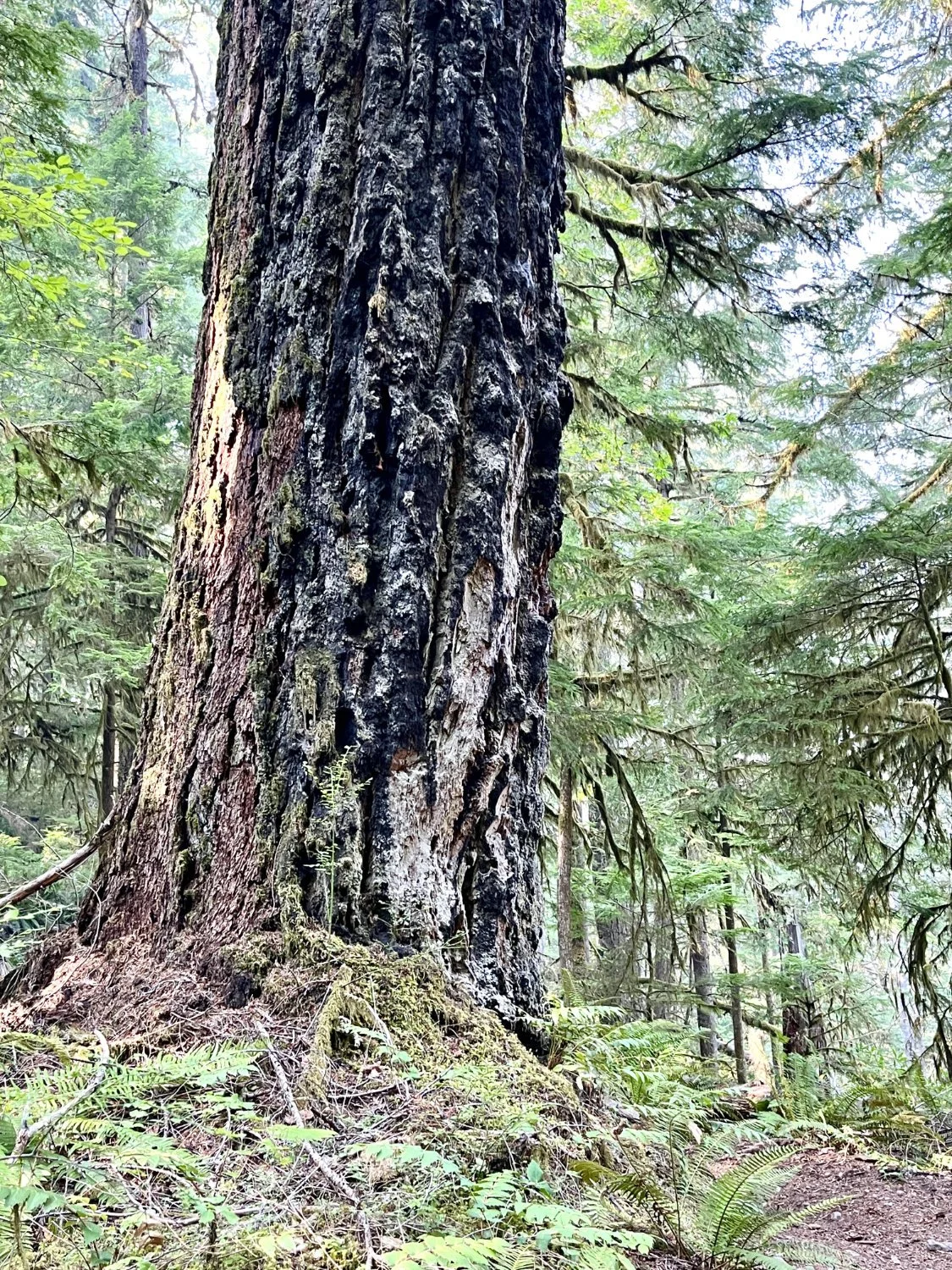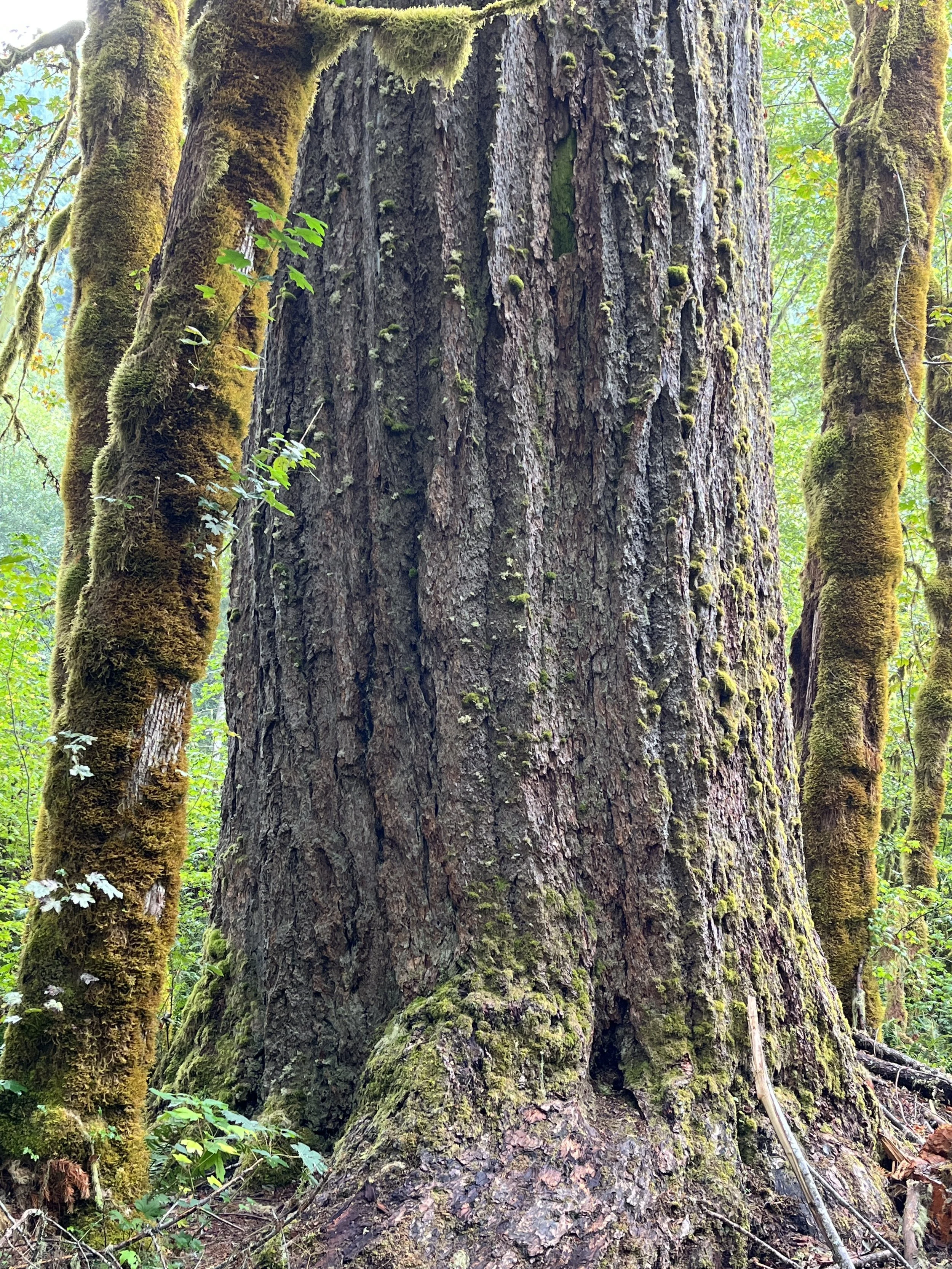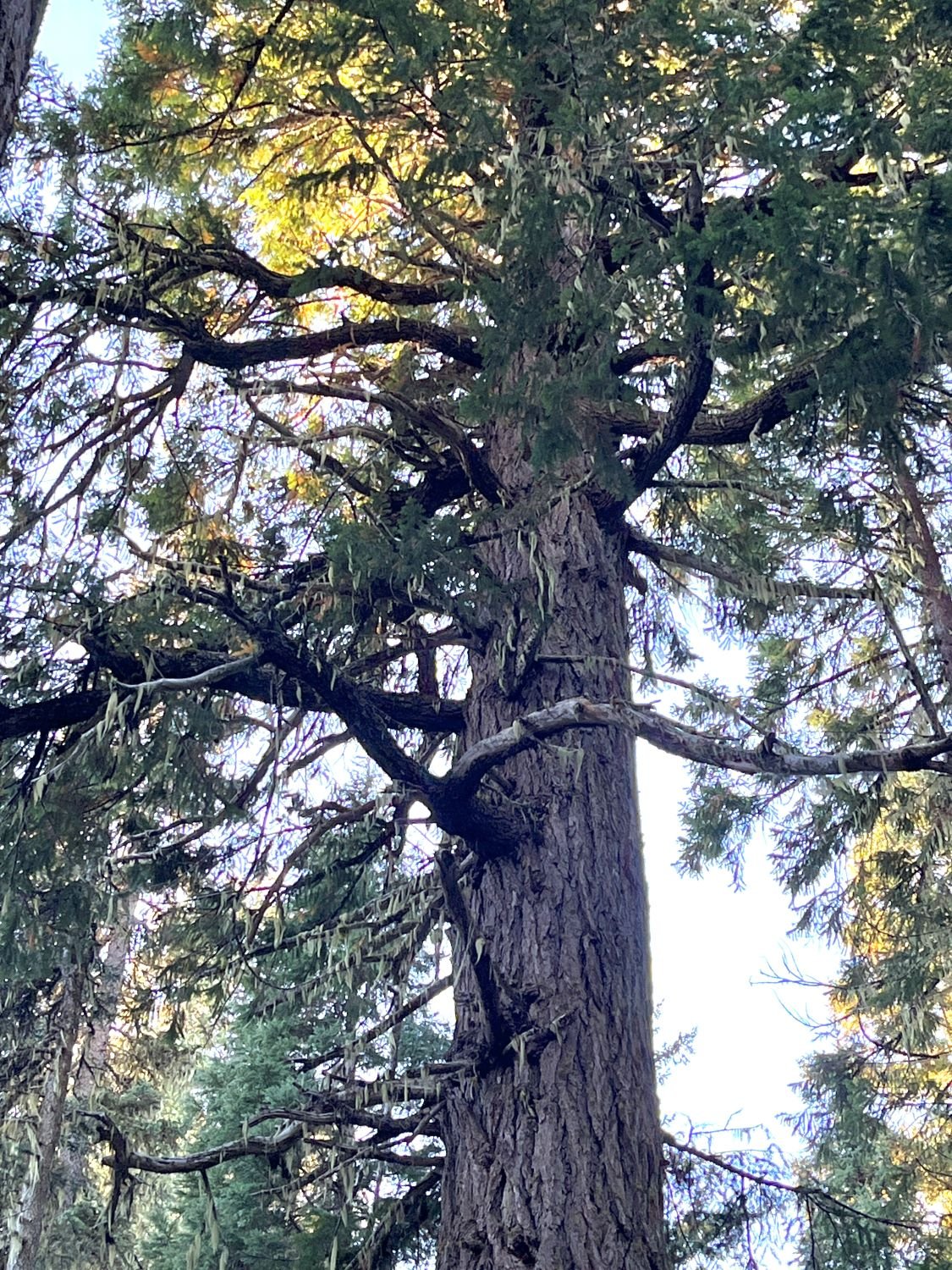
Forest age
The age of individual conifer trees can be reasonably estimated by counting tree rings. Tree cells are larger and have thinner cell walls early in the growing season when moisture is abundant, and are smaller with thicker cell walls later in the season. The result is a recognizable pattern of annual growth rings. Field counts of tree rings can be useful as a general guide, and if carefully done are often ‘in the ballpark’. But lab work on sanded and polished samples is often necessary to get an accurate count.
The age of a forest is more difficult to assess since trees of many ages are almost always present. Ecologists and others usually estimate the average age of dominant overstory trees when referring to forest age. Quite often forest age is simplified still further into broad categories like young, mature and old growth. For the majority of the forests referred to in this guide, forests under 80 years old are called young, forests between 80 and 200 years old are called mature, and forest over 200 years old are called old growth. Some aficionados refer to forests over 500 years old as ‘super old growth.’ As a general guideline, it usually takes approximately 200 years for a forest to develop the structural characteristics used to define old growth.
On the Willamette National Forest, there are broad areas in mature forest that originated following 19th century fires. Old-growth of a wide variety of ages can be found across the national forest, although forests that originated following 16th century fires were once widespread. The remaining fragments are now 400-500 or more years old and are often used as exemplars of ‘classic’ old growth. Ongoing research aims to provide more accurate and precise estimates of the fire history and forest age of the western Cascades.

Douglas-fir annual rings

Mature forest

Old growth

Old Douglas-fir

Super-old Douglas-fir

Super-old Douglas-fir canopy